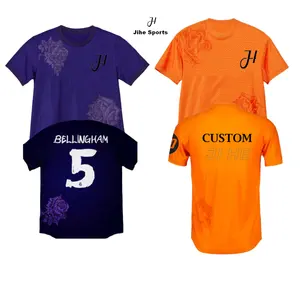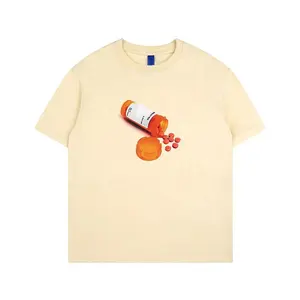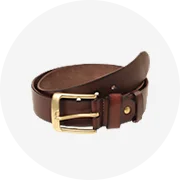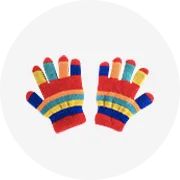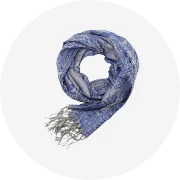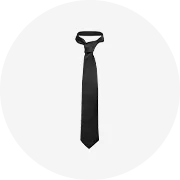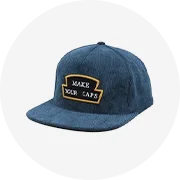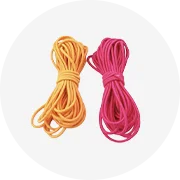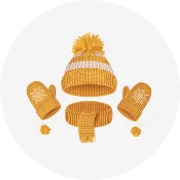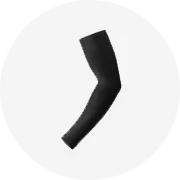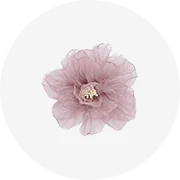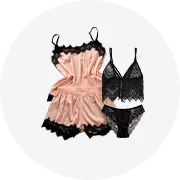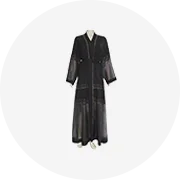Phổ biến trong ngành của bạn

6 Cái/bộ Khăn Choàng Tùy Chỉnh Khăn Trùm Đầu Khăn Voan Trơn Khăn Giấy Hộp Đóng Gói Khăn Choàng Trơn Màu Trơn Khăn Choàng Hồi Giáo
0,98 US$ - 1,20 US$
Đơn hàng tối thiểu: 50 Cái

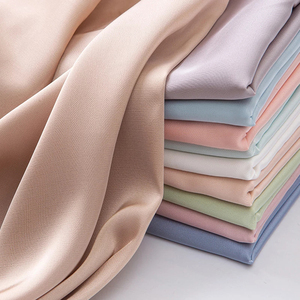
Vải Voan Satin Polyester Cho Quần Áo Áo Pajama Vải Siêu Co Giãn
0,88 US$ - 1,00 US$
Đơn hàng tối thiểu: 50 Yard


100% Polyester Flower In Ấn Tổng Hợp Lụa Voan Vải Dệt Thiết Kế Mô Hình Cho Cô Gái 'Dresses Váy Dày Dày 20D Sợi Đếm
1,53 US$ - 1,54 US$
Đơn hàng tối thiểu: 1000 Mét
Vận chuyển mỗi chiếc: 10,02 US$


Cổ nhà máy 190t 100% Polyester loại Tơ Sống lót vải
0,32 US$ - 0,35 US$
Đơn hàng tối thiểu: 1000 Mét
Vận chuyển mỗi chiếc: 1,80 US$


50D * 75D Sáng Bóng Polyester Satin Vải Cho Quần Áo Dresses Lót Vải 100% Polyester Tỏa Sáng Chất Lỏng Satin Vải Bằng Đồng Hồ
0,70 US$ - 1,50 US$
Đơn hàng tối thiểu: 2 Mét


Bán Buôn Voile Vải Dubai Hijab Vải Bông Nhật Bản Voile Vải
0,50 US$ - 0,85 US$
Đơn hàng tối thiểu: 3000 Mét


Ngô Giang Sản Xuất Dubai Abaya Màu Đen Vải/NIDA Abaya Vải
1,35 US$ - 1,55 US$
Đơn hàng tối thiểu: 3000 Yard

Khăn hijab dubai voile vải nhật bản hijab shawl 2017 vải thạch gia trang nhà máy
0,50 US$ - 0,80 US$
Đơn hàng tối thiểu: 5000 Mét

Crinkle New cey Polyester Dubai dệt dệt nghiền nát hijab cey Crepe vải cho phụ nữ hồi giáo
0,50 US$ - 0,54 US$
Đơn hàng tối thiểu: 10000 Yard
Vận chuyển mỗi chiếc: 3,80 US$

Tùy Chỉnh Màu 100% Polyester Màu Đen Hijab Nida Jilbab Vải Dubai Abaya Vải Nada Vải Cho Jilbab
1,04 US$ - 1,30 US$
Đơn hàng tối thiểu: 3000 Mét
Vận chuyển mỗi chiếc: 1,35 US$

Khăn Trùm Đầu Phương Thức Vi Sợi Màu Tùy Chỉnh Vải Nida Jilbab Vải Hồi Giáo Dubai Abaya Cho Áo Choàng Ả Rập
0,58 US$ - 0,88 US$
Đơn hàng tối thiểu: 1000 Mét
Các tìm kiếm liên quan:
vải hijab trơnvải hijab saudibán buôn khăn trùm đầu vảivải hijabvải arabic cho hijabvải hijab nữkhăn trùm đầu vải lướikhăn trùm đầu vảikhăn trùm đầu viscose polyesterdệt khăn trùm đầuchống cháy khăn trùm đầu vảikhăn trùm đầuvoile vải tuyn vải hijab vảitrung quốc bán buôn pashmina vảikhăn choàng thiết kế vải

Giá Rẻ Dubai Dệt Dệt May Nghiền Nát Hijab Cey Crepe Vải Cho Quần Áo
1,10 US$ - 1,30 US$
Đơn hàng tối thiểu: 5000 Mét

Keqiao Nhà Máy Màu Đen 100% Polyester Đồng Bằng Vải Hồi Giáo Nữ Ăn Mặc Dubai Abaya Hijab Mavijet Vải
1,39 US$ - 1,47 US$
Đơn hàng tối thiểu: 2000 Mét

In Chiffon Crepe Vải Bán Buôn Cổ Dubai Vải Voan Cho Hijab Và Trang Phục
Sẵn sàng vận chuyển
0,36 US$ - 0,50 US$
Đơn hàng tối thiểu: 100 Mét
Vận chuyển mỗi chiếc: 60,87 US$

Chất Lượng Cao Mềm Zoom Crepe Chất Liệu 100% Polyester Voan Hàn Quốc Jersey Hồi Giáo Phụ Nữ Abaya Hijab Nida Dubai Vải Cho Ăn Mặc
0,94 US$ - 2,53 US$
Đơn hàng tối thiểu: 50 Mét
Vận chuyển mỗi chiếc: 5,14 US$

Ý Tưởng Trang Phục Hồi Giáo Quần Áo Hồi Giáo Thuật Ngữ F M Abhaya Phông Chữ Tải Xuống Khăn Trùm Đầu Vải Abaya Dubai
Sẵn sàng vận chuyển
17,09 US$ - 18,29 US$
Đơn hàng tối thiểu: 2 Cái
Vận chuyển mỗi chiếc: 10,40 US$

97% Polyester 3% Spandex Mới Nhất Dubai Hijab Hồi Giáo Thời Trang Polyester In Vải Thiết Kế Pakistan Ý Lụa Khăn Vải
Sẵn sàng vận chuyển
0,68 US$ - 2,07 US$
Đơn hàng tối thiểu: 1 Mét
Vận chuyển mỗi chiếc: 338,73 US$

Khăn Quàng Cổ Mới 2022 Malaysia Bán Buôn Khăn Quàng Thời Trang Hồi Giáo Dubai Khăn Trùm Đầu Khăn Trùm Đầu Bằng Vải Voan Đính Kim Cương Giả
Sẵn sàng vận chuyển
1,85 US$ - 2,25 US$
Đơn hàng tối thiểu: 50 Cái
Vận chuyển mỗi chiếc: 1,30 US$

Máy bay phản lực đen Dubai abaya Zoom nida vải hijab vải
1,45 US$ - 1,52 US$
Đơn hàng tối thiểu: 3000 Mét

WI-A08 dệt 100 Polyester Chuỗi mô hình chất lượng cao in Dubai voan georgette vải cho hijab
Sẵn sàng vận chuyển
1,29 US$ - 1,89 US$
Đơn hàng tối thiểu: 20 Mét
Vận chuyển mỗi chiếc: 2,03 US$

Giá Rẻ Giá Polyester Dubai Dệt Dệt May Nghiền Bị Hijab Lụa Satin Vải Cho Hồi Giáo Quần Áo
0,75 US$ - 0,78 US$
Đơn hàng tối thiểu: 500 Mét
Vận chuyển mỗi chiếc: 1,60 US$

Người Đàn Ông Giản Dị Ả Rập Dubai Saudi Người Đàn Ông Của Tua Hijab Acrylic Vải Sọc Phong Cách Dệt In Bình Khăn Hijab Khăn
1,00 US$ - 1,20 US$
Đơn hàng tối thiểu: 5 Cái
Vận chuyển mỗi chiếc: 19,91 US$

New 120gsm Polyester Bong Bóng Voan Hàn Quốc rêu Crepe vải hijab DRESS Dubai voan vải
0,87 US$ - 1,30 US$
Đơn hàng tối thiểu: 120 Yard

Sản xuất tại Trung Quốc Dubai somali dirac lụa kết cấu voan vải cho hijab khăn
0,70 US$ - 1,50 US$
Đơn hàng tối thiểu: 1 Mét
Vận chuyển mỗi chiếc: 16,97 US$

Vải CEY Thanh Lịch Hai Tông Màu Thiết Kế Theo Yêu Cầu Giá Rẻ Vải Chấm Bi Dubai Ai Cập Cho Khăn Trùm Đầu
0,49 US$ - 1,08 US$
Đơn hàng tối thiểu: 1000 Mét

2024 Sang Trọng Abaya Vải Ramadan Eid Dài Hijab Váy Hồi Giáo Cầu Nguyện Quần Áo Vải Cho Phụ Nữ Hồi Giáo Dubai Trang Phục

0,98 US$ - 1,05 US$
Đơn hàng tối thiểu: 2000 Mét
Vận chuyển mỗi chiếc: 80,23 US$

Chất Lượng Tốt Nhất Của Vải Nhung Siêu Nhỏ Của Hàn Quốc 5000 Chế Độ Đại Bàng 54 "100% Polyester Plain Micro Falcon Velvet Super Micro 5000
Sẵn sàng vận chuyển
2,45 US$ - 2,60 US$
Đơn hàng tối thiểu: 1 Yard
Vận chuyển mỗi chiếc: 16,96 US$

Tùy Chỉnh Mẫu Mới In Kỹ Thuật Số 100% Polyester Satin Vải Cho Dubai Hijab Ăn Mặc
1,99 US$ - 2,85 US$
Đơn hàng tối thiểu: 300 Mét

Chất Lượng Cao Cấp Vải Dài Tích Hợp Hijab Jilbabs Với Váy Cho Hồi giáo Phụ Nữ Len Đào Người Lớn
14,00 US$
Đơn hàng tối thiểu: 10 Cái

Chất Lượng Cao Giá Rẻ Giá 100% Polyester Khăn Hijab Hồi Giáo Sudan Toub Thụy Sĩ Xoắn Cao Voile Vải Cho Lady Khăn Quàng Cổ
0,45 US$ - 0,85 US$
Đơn hàng tối thiểu: 5000 Mét

Abaya Dubai Sudan phụ nữ toub Thụy Sĩ bông Voile ăn mặc năm bãi in kỹ thuật số thiết kế hàng đầu lấp lánh Nhật bản vải
11,00 US$ - 14,00 US$
Đơn hàng tối thiểu: 2 Cái



Voan vải thiết kế bán buôn hoa thêu hồi giáo mở abaya hijab 2 mảnh hồi giáo quần áo phụ nữ khiêm tốn ăn mặc Dubai
16,90 US$ - 28,80 US$
Đơn hàng tối thiểu: 50 Cái
Vận chuyển mỗi chiếc: 2,43 US$

Sedra Dệt Mật Độ Cao 68 "25Yards/Cuộn Hàn Quốc Hijab Chính Thức Đen Malaki Vải Cho Trung Đông Thị Trường
1,62 US$ - 1,69 US$
Đơn hàng tối thiểu: 1500 Yard

Vải Cotton Jersey Thoải Mái Thêm Hai Màu Khăn Trùm Đầu Kim Cương Đính Kim Cương Malaysia Dành Cho Phụ Nữ Hồi Giáo Dubai
Sẵn sàng vận chuyển
2,72 US$ - 3,27 US$
Đơn hàng tối thiểu: 12 Cái
Vận chuyển mỗi chiếc: 3,23 US$

Vestido Thời Trang Mới Nida Vải Lỏng Màu Đen Phụ Nữ Dài Ăn Mặc Abaya Đá Lưới Làm Việc Cầu Nguyện Dresses Với Khăn Trùm Đầu Với Dubai Kaftans
9,90 US$ - 10,90 US$
Đơn hàng tối thiểu: 50 Cái

Khăn Trùm Đầu Niqab Hồi Giáo Màu Đen Trang Trọng 100% Sợi Nhân Tạo Bán Sỉ Giá Rẻ Vải Voan Cho Abaya
0,74 US$ - 0,90 US$
Đơn hàng tối thiểu: 3000 Mét

Dubai Thổ Nhĩ Kỳ phụ nữ Shinny màu kim loại bán buôn Polyester cotton ánh sáng lung linh Bridal satin vải cho quần áo abaya hoặc hijab
1,94 US$ - 2,64 US$
Đơn hàng tối thiểu: 3 Mét
Các danh mục hàng đầu
Giới thiệu về vải hijab dubai
Alibaba.com cung cấp các sản phẩm 2149 vải hijab dubai. Có rất nhiều vải hijab dubai lựa chọn dành cho bạn, chẳng hạn như hồi giáo hồi giáo, trung đông, và châu phi. Bạn cũng có thể chọn từ mùa xuân, mùa đông, và mùa thu vải hijab dubai. Cũng như từ polyester, lụa, và cashmer vải hijab dubai.Và bất kể vải hijab dubai là rắn, in, hay đồng bằng.
